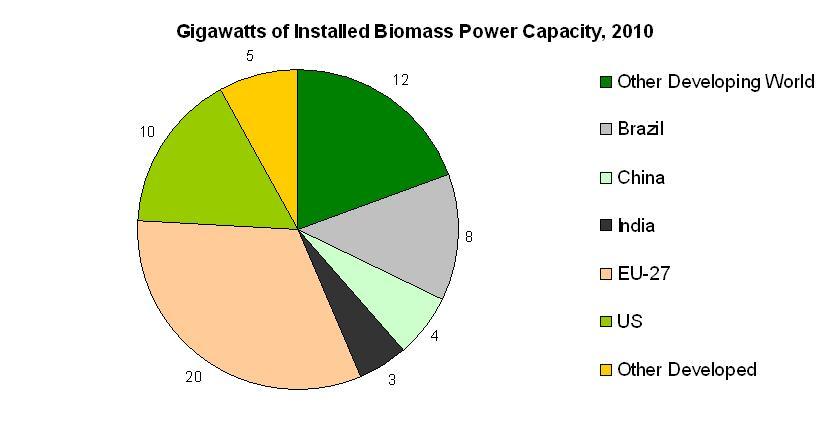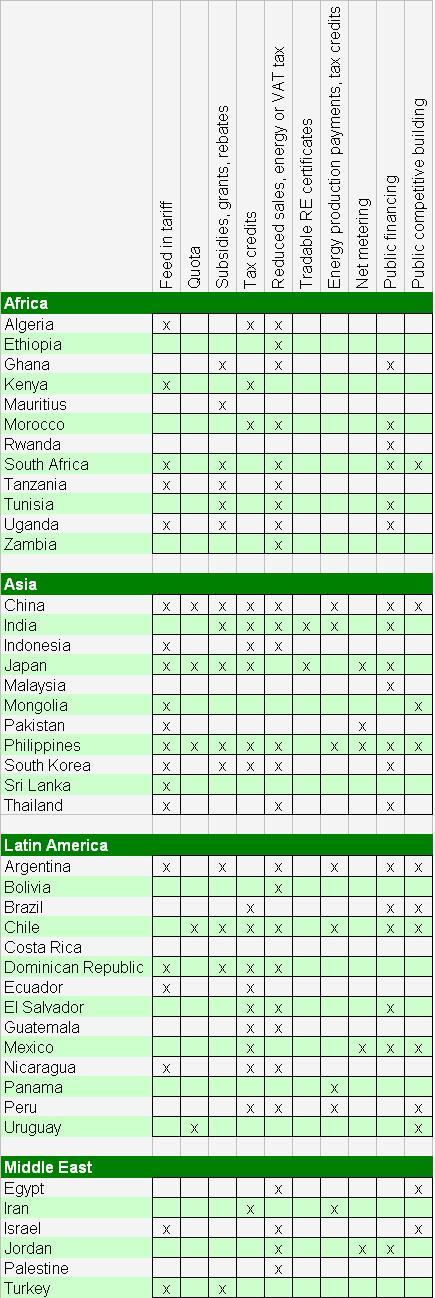The Renewable Energy Policy Network for the 21st Century (REN 21) recently released its Global Status Report for 2011. It shows a growing developing world presence in renewable power generation, particularly biomass. Although developing countries account for only 30 percent of the world’s renewable energy capacity, they are responsible for around 44 percent of the power generated through biomass fuel sources.
Highlights:
- In 2010, China increased its renewable energy capacity by 12% over the year before for a total of 263 gigawatts.
- At least 20 countries in the Middle East, North Africa, and sub-Saharan Africa now have active renewable energy markets.
- China leads the world in the number of biogas plants.
- Biomass power generation has notably increased in Costa Rica, Mexico, and Uruguay.
- India added about 0.3 gigawatts of biomass power capacity in 2010 for a total of 3 gigawatts. This energy is utilized at grid-connected biomass power plants, off-grid distributed biomass power applications, and for cogeneration at sugar mills and in other industrial settings.
- Thailand added only 0.003 gigawatts of solid biomass capacity in 2010, ending the year with a total of 1.3 gigawatts, but nearly doubled its biogas capacity in 2009 to 0.05 gigawatts and increased it a further 37% in 2010 to 0.07 gigawatts.
- Several African countries, including Cameroon, Kenya, Tanzania and Uganda, have recently installed biomass power capacity or have planned its construction.
- Biogas projects—notably landfill gas—have come online in South Africa, Egypt, Tunisia and Jordan.
- Bagasse has become the biomass resource of choice in numerous developing countries.
- At the end of 2010, a total of 312 gigawatts of renewable energy power capacity was installed, of which 62 gigawatts was for the utilization of biomass fuel sources.
Developing countries are also catching up with world-leading Europe in terms of government incentives for renewable energy. As a consequence the number of countries with policy stipulated targets for the utilization of renewable energy has increased steadily, from 79 in 2008 to 89 in 2009, then reaching 96 as of 2010. An overview of the developing world’s policy environment is given below.
More on the changing international landscape of renewable energy can be uncovered by reading REN 21’s full report.


